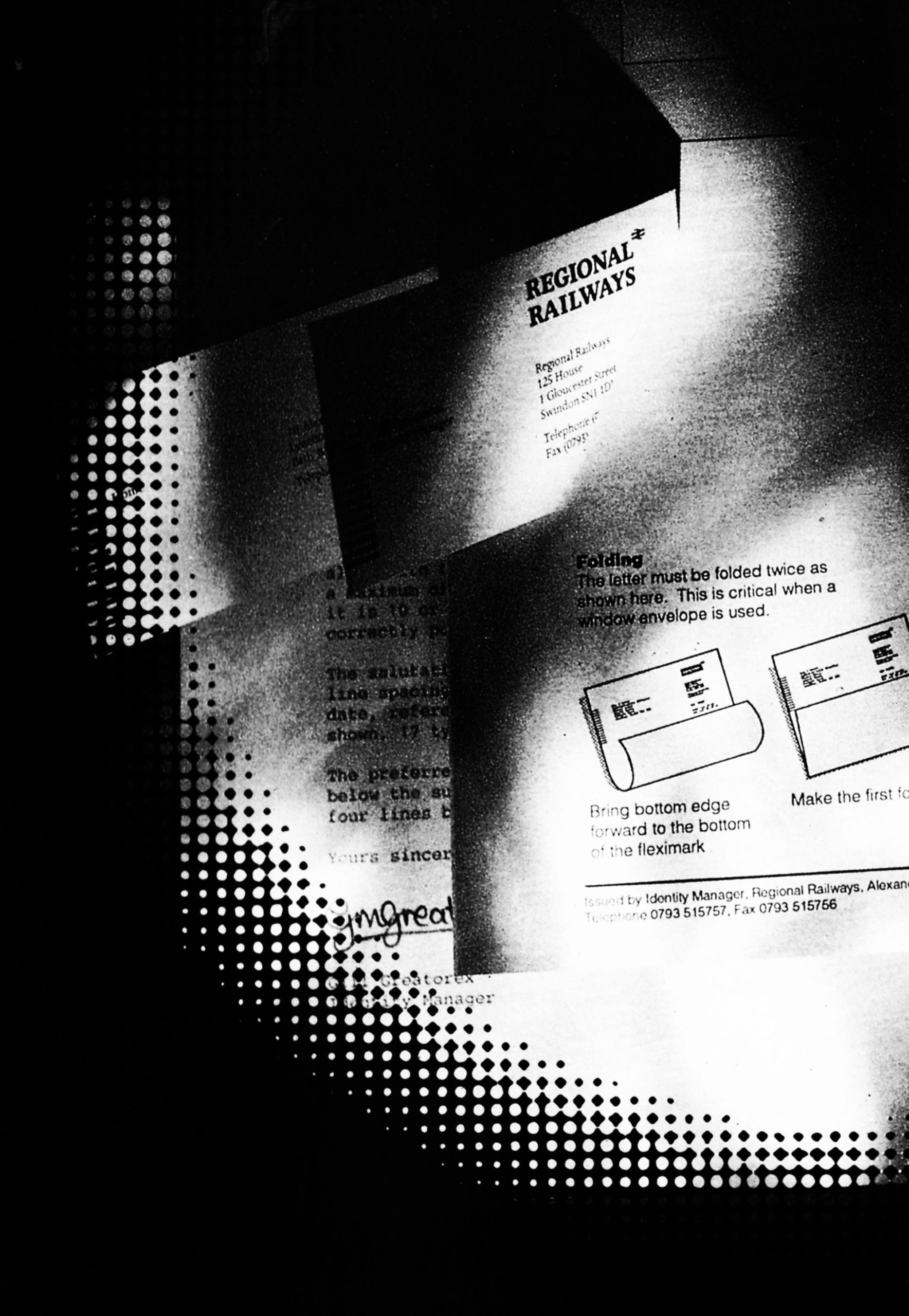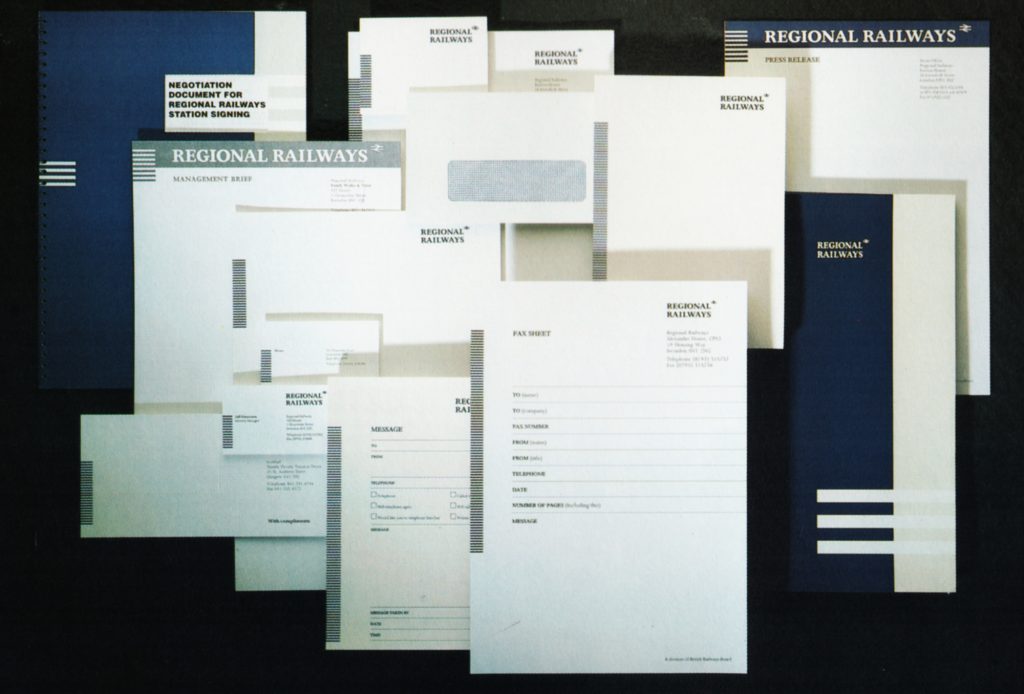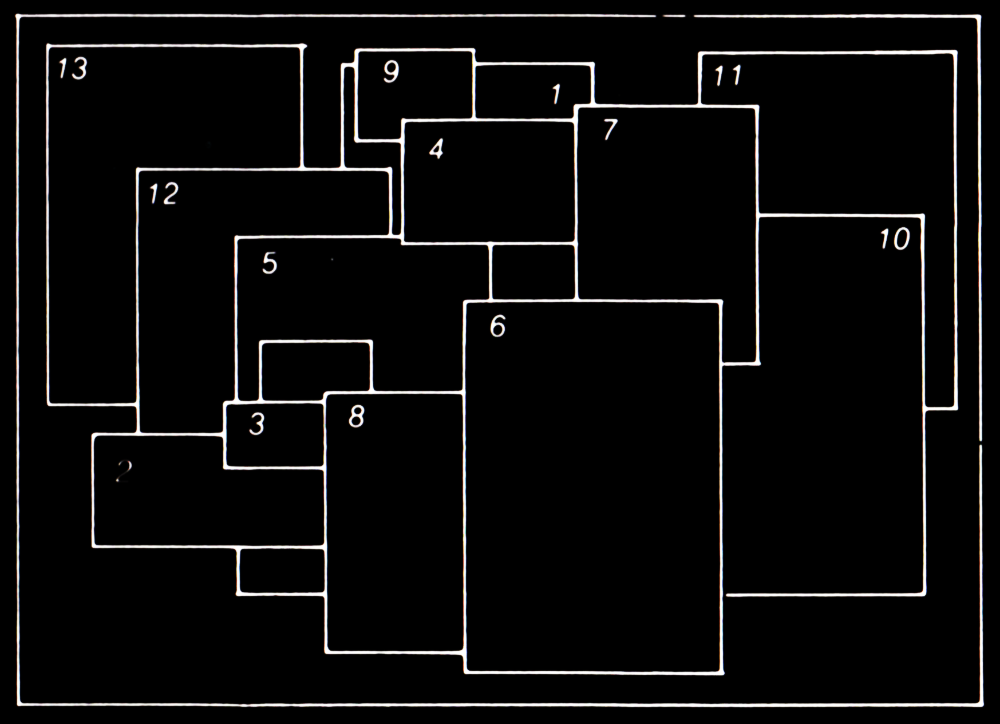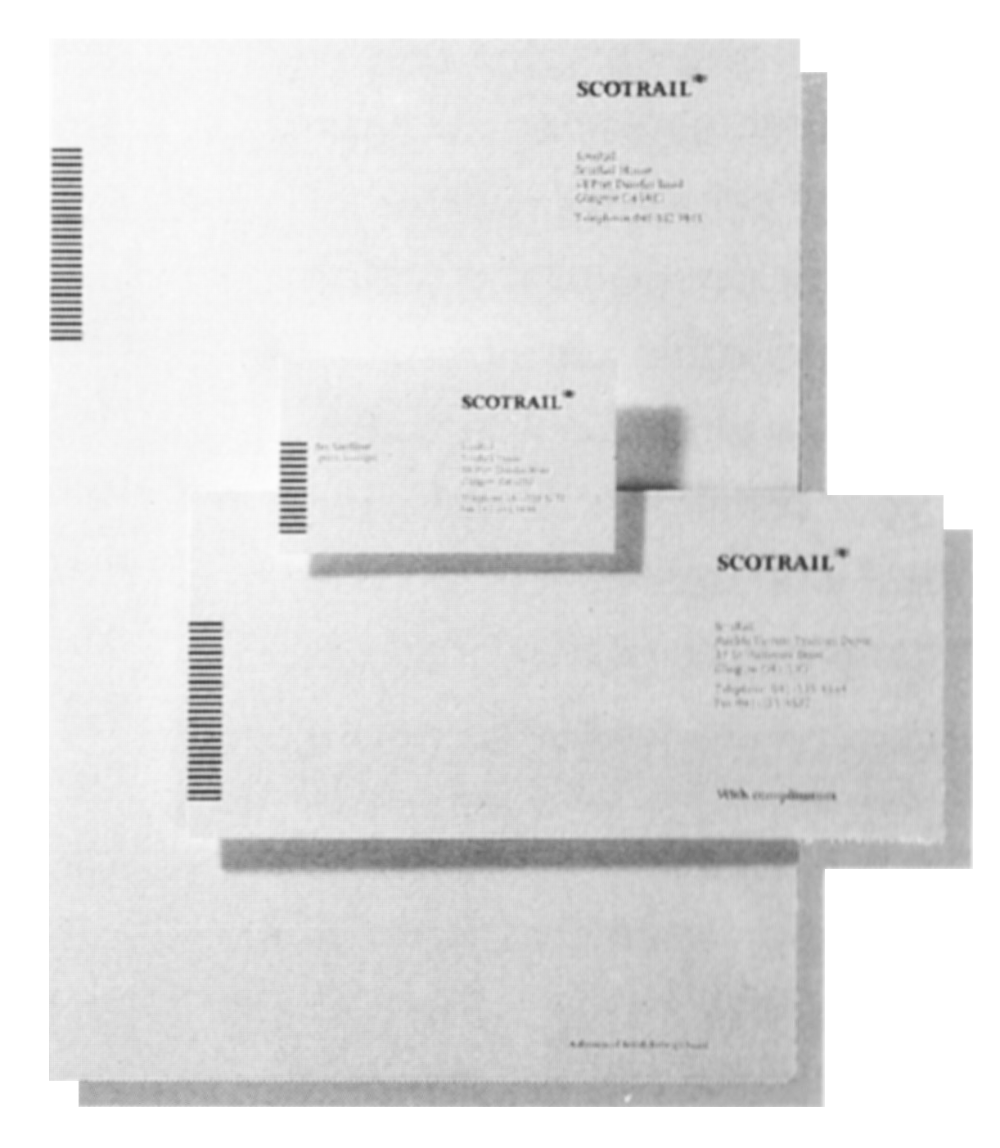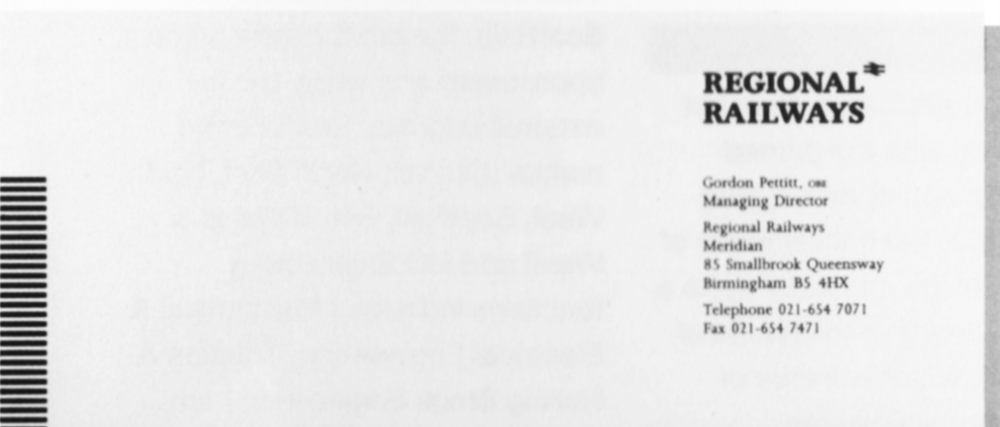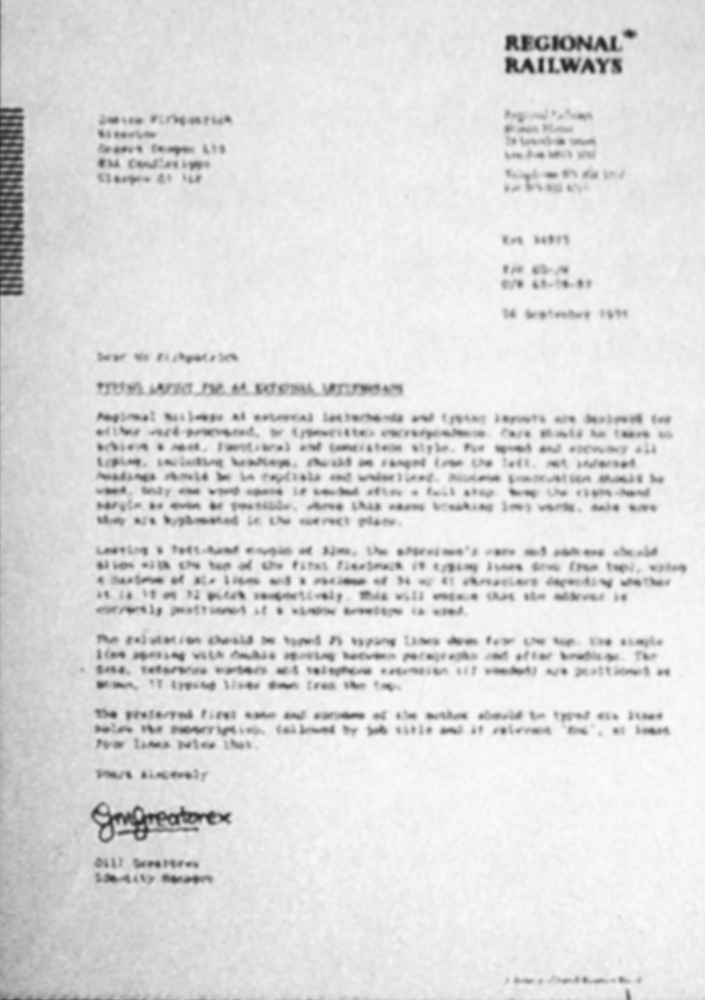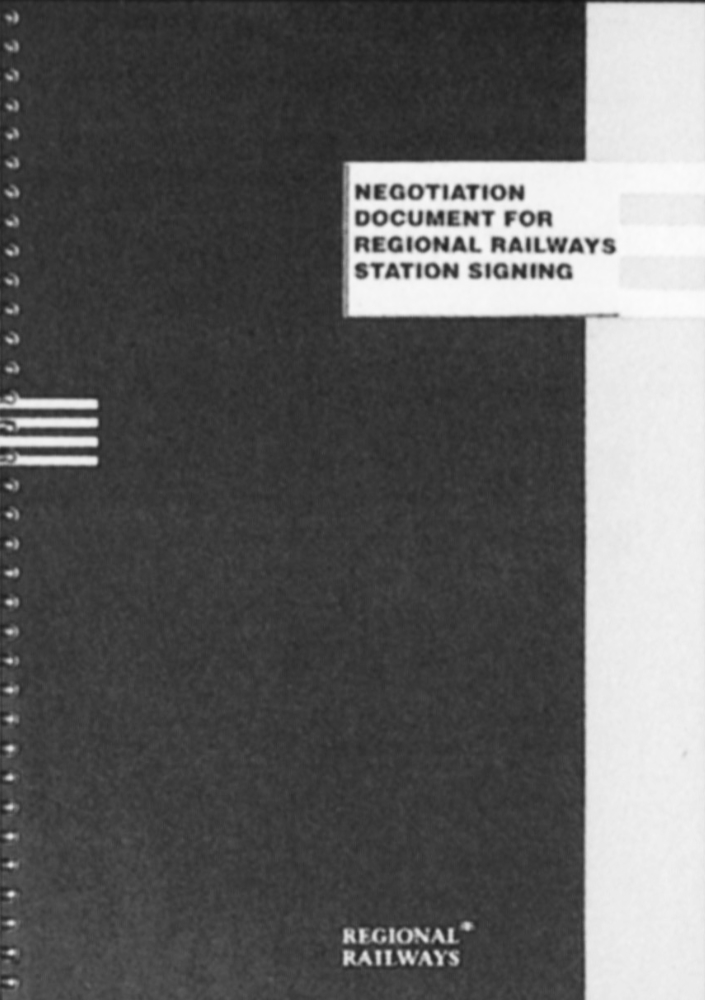

- Stationery range
- Paper quality
- Pocket folders
- Internal documentation
- Ordering
The people who make daily use of Regional Railways stationery are the secretaries. We asked them to pinpoint any problems they had encountered with Provincial stationery so that we could find ways and means of overcoming them. The typing guide information sheet which can be found in the Identity Management binder, for example, is based directly on their experience.
The Regional Railways external letterhead is clear and direct in style. The fleximark plays its role as the linking family characteristic: it is also the guide mark to show a) where to start typing or printing and b) how far one should fold the lower third of the page so as to align the address correctly in the window envelope. The internal letterhead carries only the logotype and the fleximark. It is also intended as a continuation sheet for external letters and for writing reports, another sound idea from the secretarial staff.
There are no anonymous initials on the business card nor the telephone directory. Staff use their preferred first name. It is a move that is in step with the times and it simplifies identification and communication. The front of the business card provides the information needed by contacts outside Regional Railways and indeed outside British Rail itself. Staff can also use the back to provide details of internal addresses for people inside the business or an alternate location or their home address for people outside the business. Staff in Wales can have double-sided business cards: Welsh on one side, English on the other.
The entire range of Regional Railways’ stationery includes fax header sheets, memo pads, folders, and covers for internal publications. They are all designed meticulously. In terms of the overall investment, properly designed stationery is not expensive. However the return on such attention to detail is incalculable. An organisation that takes this kind of care when presenting one part of itself to another, or when presenting itself to outsiders, is an organisation prepared to take care of every part of its operation.
